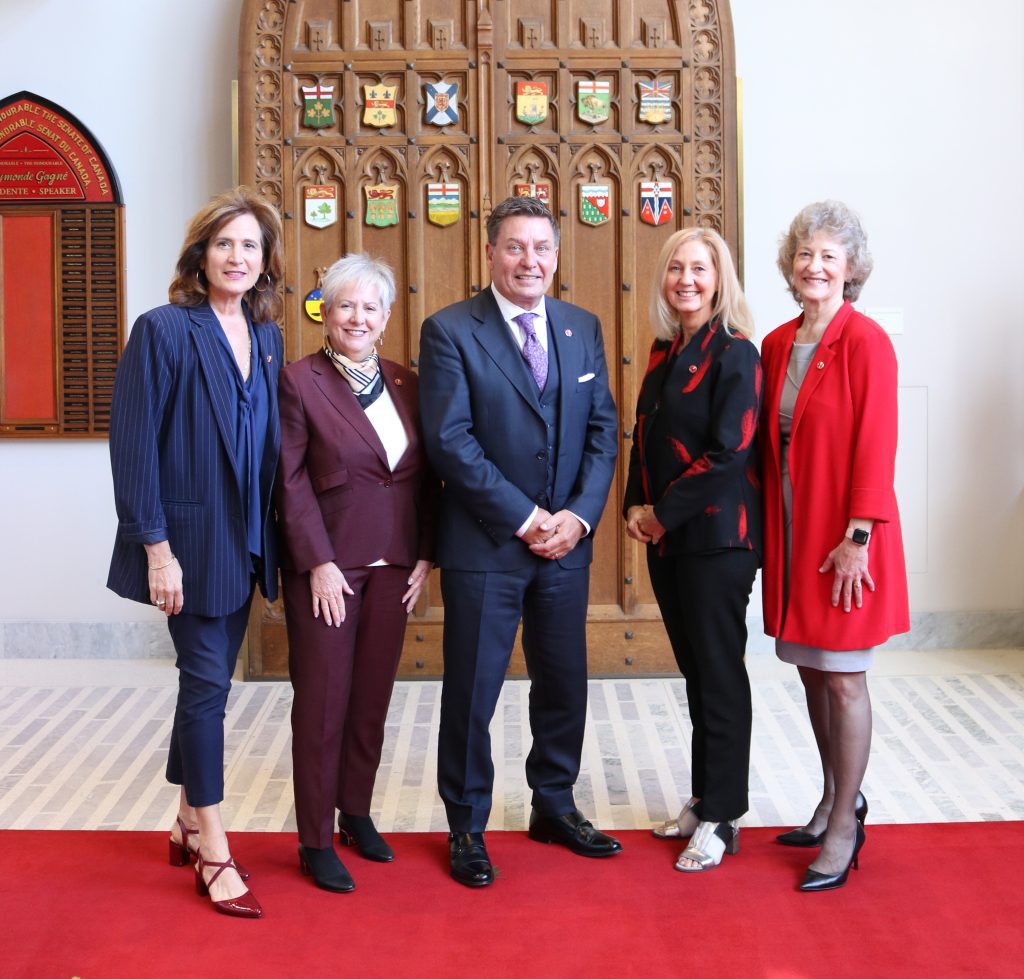About the Government Representative’s Office (GRO)
The GRO is responsible for both shepherding the Government’s legislation through the Senate in a timely manner and championing renewal in the changing institution. Although the GRO senators represent the Government to the Senate, they do not sit in a partisan caucus and do not lead a caucus. Because of this, the Government team has no power to direct the votes of senators. The team promotes a vision for the Senate that is more independent, along with a strong focus on the role of the Senate as a complementary body to the House of Commons.
Formed in the spring of 2016, the GRO is a departure from previous Senate practice in which the Government Leader in the Senate was part of the same caucus as the Government. While the old model was characterized by top-down partisan control manifested through whipped party votes, the new model relies on senators’ exercise of judgment within the framework of the institution’s complementary role.

Prime Minister Mark Carney meets with Senator Pierre Moreau and Minister Steve Mackinnon in his Ottawa office on 26 June, 2025.
What are the roles?
The Government Representative in the Senate (formerly Government Leader) is the first point of contact between the Government and the Senate. This senator represents the Government to the Senate and the Senate to the Government. The Government Representative is a member of the Privy Council and attends some cabinet meetings to discuss the legislative agenda and Senate modernization. The Prime Minister appoints the Government Representative in the Senate. Senator Pierre Moreau (Quebec) was named to the role in July 2025.
The Legislative Deputy to the Government Representative (formerly Deputy Leader) plays a major role in working with other senators in leadership roles to structure debate in the Senate chamber on a daily basis, including managing and moving Government procedural motions (for example, to adjourn the Senate until a specified time). Senator Patti LaBoucane-Benson (Alberta) assumed the role in May 2023, after previously serving as Government Liaison.
The Government Liaison (formerly Whip) is responsible for outreach on Government business in the Senate and works to ensure that all senators have the information they require in anticipation of votes. The Government Liaison also has certain procedural powers in relation to the timing of votes. Previously, the Whip would have worked to ensure caucus attendance and enforce party discipline in voting. Senator Iris Petten (Newfoundland and Labrador) was named Government Liaison in September 2024.
The Deputy Government Liaison (formerly Deputy Whip) supports the work of the Government Liaison, engaging in outreach with senators from all groups. This senator also supports the work of the GRO more broadly, working with the Legislative Deputy and Government Representative on various issues, as necessary. Senator Pat Duncan was named Deputy Government Liaison in September 2025.
The Chair of the Government Representative’s Office in the Senate (formerly Chair of the Caucus of the Government in the Senate) supports the work of the GRO as a whole in its objective to shepherd the Government’s legislation through the Senate in a timely manner. Senator Sandra Pupatello (Ontario) was named to the role in September 2025.

(From left to right) Senator Sandra Pupatello, from Ontario, is Chair of the GRO; Senator Iris Petten, from Newfoundland and Labrador, is Government Liaison; Senator Pierre Moreau, from Quebec, is the Government Representative in the Senate ; Senator Patti LaBoucane-Benson, from Alberta, is Legislative Deputy; and Senator Pat Duncan, from Yukon, is Deputy Government Liaison.
How does a bill become law?
For a federal bill to become law in Canada, it must pass the House of Commons and the Senate in identical form, and then receive Royal Assent from the Governor General. In both chambers, a bill receives first reading (tabling of the legislation), second reading (debate on its principle), committee stage (where witnesses present evidence), report stage (where the committee’s report may be debated) and third reading (the final stage of debate, followed by a vote).
What is a Senate sponsor?
When a Government bill is introduced in the Senate — usually after it has passed through the House of Commons but in some cases originating in the Senate — a Senate sponsor leads the consideration of the legislation. This work includes delivering major speeches in the Senate chamber and participating in a committee’s in-depth review of a bill. A Senate sponsor keeps an open mind as debate proceeds.
In identifying Senate sponsors, the Office of the Government Representative in the Senate works to match individual Senators’ expertise, experience and policy judgments with Government legislation. A Senator may choose to sponsor a Government bill because of how it relates to his or her regional interests or professional background, or for other reasons. The Office also works with Ministers’ offices to ensure sponsors have all the information they need to play a leadership role in proceedings as a bill is debated in the Senate and at committee.
Senators are tasked with reviewing Government legislation, which may or may not have been specifically mandated by the electorate in the previous election. In some cases, the Senate amends Government legislation, and then it’s up to the House of Commons to accept, decline or alter those amendments. If the chambers do not agree on a final bill, they may send messages back and forth until a resolution is found.
In the past, Government legislation was sponsored in the Senate by Senators who were part of the Government caucus. Given that the current Government does not have a caucus in the Senate, the three-member Government Representative Team collaborates with all Senators, regardless of their affiliation, to find sponsors. Bills have been sponsored by members of all organized groups within the Senate.
What other changes are taking place in the Senate?
The GRO promotes Senate modernization through discussion papers, policy proposals, media interviews and debate in the Red Chamber. While the GRO plays a key role in pushing forward modernization, it was a priority before the office was created, and senators from all groups play important roles in the process. The Special Committee on Senate Modernization was first proposed in May 2014 to make the institution more effective, transparent and responsible. Since then, the committee and individual senators have come forward with ideas, including proposals to make changes to Senate rules, procedures and practices. The Senate as a whole has the final say on whether or not to accept those proposed changes.
The Senate appointment process has also changed. In December 2015, Prime Minister Justin Trudeau’s Government announced the creation of a new independent advisory board to make merit-based recommendations for Senate appointments. Since then, all new senators have been appointed as independents. The power to appoint senators remains with the Governor General, whose power is exercised on the advice of the Prime Minister.



















































